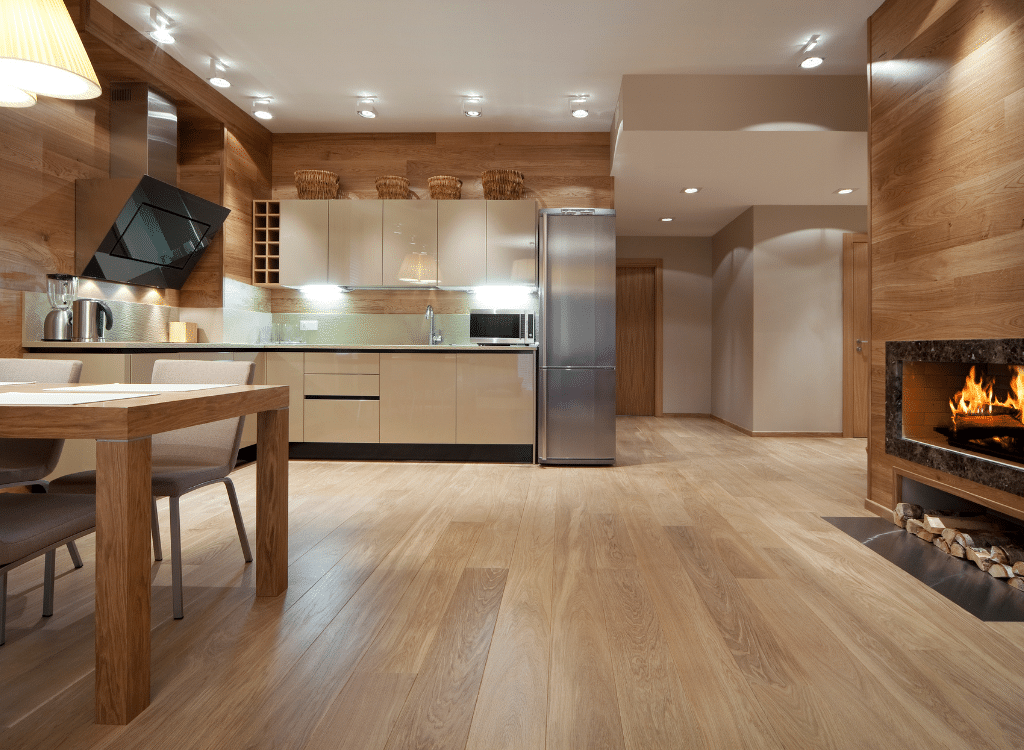A floor plan gives concepts physical form. It enables you to see dimensions scaled down on graph paper or computer software and will assist in the conversion of ratios correctly for an accurate final design.
Floors typically consist of either solid surfaces that are built directly upon the earth, or suspended and supported by wall structures, and may even include voids created by beams or ribs to house services.
Floorboards
Floorboards are an essential element in the design of any floor. Their wood type and grain can play a crucial role in how any room appears; rustic styles often work better with an apparent grain, while modern ones may benefit from having less visible ones.
Long or short boards should also be taken into consideration, since long boards tend to create an uniform look in a room and make it feel larger, while short boards add visual interest by creating different areas – for instance an eating and living zone as opposed to relaxation or television watching zone.
As a rule, thicker decks with closer spacing of joists will increase the composite action of a floor assembly and thus decrease vibration comfort. A bridging technique utilizing blocks or strapping placed 2.4 meters (8 feet) on-center (oc) or less will further strengthen composite action and decrease deflection under short-term dynamic loads; additionally, having deeper, stiffer joist depth will further enhance floor performance by decreasing deflection under light working loads.
Tiles
Tiles are versatile glazed or unglazed products composed of clay, stone, glass or cement that can be used to cover walls and floors for waterproofing and style purposes. There is a variety of patterns for their placement that make tile installations versatile.
Size and shape of tiles have an enormous effect on how a room feels; smaller tiles make a smaller room seem cozier, while larger tiles create the impression that it is larger and more open.
Reusing different tile sizes to form patterns such as herringbone, basketweave or offset grids can produce interesting effects, such as herringbone patterns, basketweave designs or staggered grids. A linear stack tile pattern uses three sizes of tiles arranged from bottom to top; creating the motif requires laying (from bottom to top) square tiles, medium rectangle tiles and long thin rectangle tiles in sequence (as is done when creating linear stack tile patterns). A variation on this theme looks good when combined with plain tiles of the same colour and shape; either through adding borders or rug patterns.
Carpet
Carpet provides a soft, comfortable surface underfoot and insulation benefits such as noise reduction and lower heating bills. Available in an array of styles, colors and textures, carpet can transform the aesthetics of any room it graces.
Nylon, polyester and polypropylene are durable synthetic fibers with stain-resistance that make an attractive cut-and-loop style rug an ideal choice for high traffic areas like hallways and offices. By interweaving some cut fibers with looped ones to form an textured pattern that hides dirt and wear, cut and loop styles offer dirt protection while at the same time concealing wear from heavy foot traffic.
Modern carpets emit lower levels of volatile organic compounds (VOC) than other common flooring options and, when cared for properly, can help improve indoor air quality. Their large fiber surface helps absorb gaseous pollutants such as formaldehyde, sulphur dioxide and oxides of nitrogen which contribute to poor indoor air quality.
Vinyl
Vinyl flooring can be found in an array of home floors. It’s versatile, cost-effective, and can withstand heavy foot traffic and moisture without losing its resilience.
Standard vinyl is composed of all or mostly PVC plastic and has vastly improved in durability and design over decades ago. Today’s products can absorb moisture without swelling up, while their design layers mimic other materials such as wood, marble or stone.
Chlorine in vinyl polymers creates flame retardancy. This protects it against damage from electrical and chemical sources as well as from starting or spreading fires, making vinyl an excellent choice for metal tubing and plumbing because it doesn’t conduct electricity like many other types of pipe do. Unfortunately, vinyl may emit volatile organic compounds (VOCs), which could pose health concerns for some individuals or pets in your household; to minimize this possibility after installation ensure that ventilation is kept to a minimum and choose an option with low VOC emissions.





